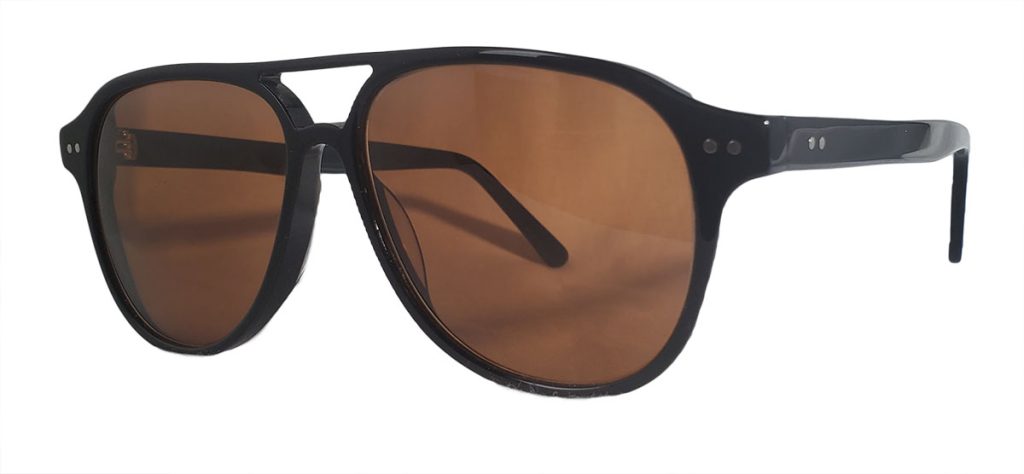The Fit Of Your Prescription Glasses – How Should Glasses Fit on Your Face
You are not entirely correct if you think buying glasses is different from, say, pants. While pants have more detailed nuances, glasses have little quirks. You must be ready to work out.
Unfortunately, most optometrists do not supply the measurements of the specific areas corresponding to how glasses fit on a person’s face on the prescription. We must take care of this ourselves. And with us all increasingly buying our glasses online, we must be prepared to do our groundwork. This way, our experience is not disappointing and a waste of money.
An ill-fitting frame will not only affect the comfort and look of your glasses. They can very much compromise the performance of your glasses. This is especially true for progressives (bifocals though not to the same degree) or high prescriptions.
Often small tweaks have to be made to ensure proper fit. This is usually after the glasses are received. But picking the right size will be a very helpful starting point.
On the surface, yes — glasses seem very much like a one size fits all type of deal. But in reality, anyone with glasses will tell you they have many annoying issues.
- Like glasses slipping down your nose — when you look down even slightly.
- Pinching your nose
- You might feel like you are carrying a load on your nose, pressing down on your temples,
- Or the nose pads cutting into your skin?
Small details such as these – can, for the most part, be avoided by picking the right-sized frames.
The first place to start is the width of the frames :
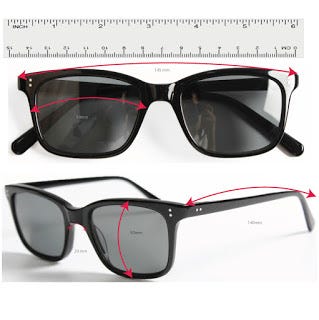
Why is this important, you say?
Well, it’s the obvious place to start — looking at your face, you first must determine how the frames are sitting. They should be sitting comfortably on the tops of your ears and nose, but with the right spacing — about 1/2″ — 3/4″ from your temples to the temples of the frames on each side.
Looking at the image below, you will see the following:
1st image:
It has a smaller frame looking straight on; you can see the temples from the frames flaring out. This could lead to discomfort on the temples from the frame arms pressing on the side of the face, indentation on the side of the face, and it doesn’t look good! For progressive glasses, the reading portion of the focal point may end up being too high.
2nd Image:
You can see the frames are centered perfectly. This ensures a good fit on the whole for the average face.
3rd Image:
But on this image ( and I must say that this is also predicated on personal taste as the large-sized frames are very “in” right now), the frames are so big you can see the face’s outside lines inside the lenses. This can lead to problems with the frames staying in place(they may tend to fall off a lot). They will tend to be bigger on the whole for the average face as the measurements are often standardized.
If this is a large size, the temples, and bridge will also be large. Again – though this does not really apply to frames that have been designed with a large frame- look! However, the other parts should fit even when designed to give the appearance of a large frame. This can also be a reason why the prescription might be off. Especially for progressives, as the focal points will be too low. Meaning you will have difficulty accessing the reading portion of your glasses. Or even worse, the progressive mid-vision section could be on your line of sight, thus being irritating and making it hard to see clearly.
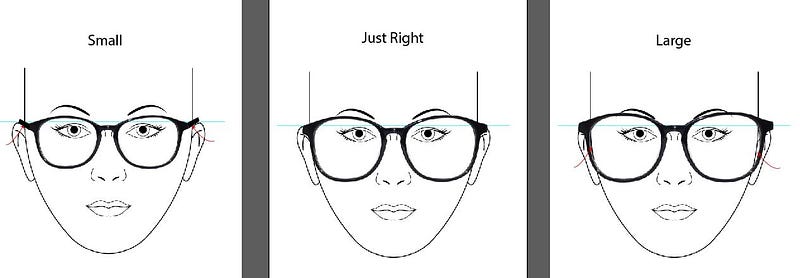
Next on the list are the lenses’ height and width:
Keeping in mind that the lens must fit within your face proportions. You want to think about how deep the lenses will go down your face.

As you can see in the image from the “virtual try-on” above, the sizes of the lenses of different frames.
Especially for progressive prescriptions, it’s essential to consider the size of the lenses. Also, how they will affect the ease in which your eyes access the “reading portion” of the lenses. Otherwise known as the segment height. Picking a frame that is too different in size from your current frames will require time to get used to. The bigger the lens height, the lower the reading portion of your glasses.
The smaller the lens height, the higher the reading portion will tend to be. To counter this, you must make a reasonable estimate based on the glasses you now wear. Measure from the bottom of the frames to the center of your pupils to get the segment height based on the frames you wear (follow the link above for more). Then translate this to the frame size you are about to pick. This should give you a good idea of how to make this work. This is key try not to skip this part until you are more experienced in buying glasses online.
The next important measurement is the temple length
This will determine the following:
1. How close will the frames sit to your face? The longer the temples, the farther out from your face they can sit. If they are too short (look out for this), they will be too close to your eyes. And, when they are – they end up brushing against your cheeks or pressing into them. Either of these options will most likely be uncomfortable and could very much affect your vision
Ideally, the frame should not touch the face before the hairline. In this way, the grip is at the ear point and not before.
2. The tightness or looseness of the frames. Manipulating the curve at the back of the ears will help you make them looser or tighter (further or closer to your face)
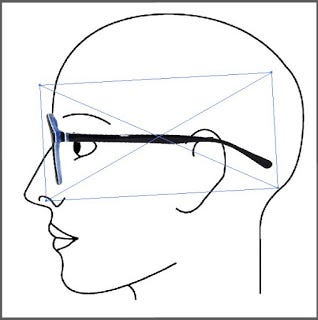
to fit comfortably around the ears
As you can see, the temples are very straight with not much curve. This will give you a chance to customize the fit further. Curving the ends closer around your ears and bring the frames get closer to your face and will stop them from falling off your nose.

A better fit would have a slight inward angle, temples just sitting comfortably with the bend beginning at the ears.
The bend of the temples should also start at the ear. This way that there is no pulling effect and no discomfort.
You should measure or inspect your current frames. Please don’t assume it’s correct sometimes; we have gotten used to the discomfort and made that the norm. This way, you can be assured there is no pulling. If not, use the temple measurements indicated there. If you can’t read/see the numbers on the frame. Measure the frame using millimeters (mm), which is more accurate as the increments are pretty small.

Last but not least is the bridge:
The bridge is interesting because this will definitely affect the way the glasses sit on your face. Specifically affecting the appeal of your glasses. You have to understand and consider the type(shape) of nose you have. Do you have a high bridge, a low bridge, a big nose, or a small nose?
If you prefer metal frames, you will find it’s generally much easier to manipulate the nose pads than plastic frames with built-in nose pads. For this reason, getting the right size bridge on plastic frames is more important.
The glasses will sit too high on the face if the nose bridge is too small.
*This is not something everyone knows, so here’s a quick primer on noses 🙂
Taking a quick selfie profile will help you determine if you have a high or low nose bridge.
- If your bridge is low (level or below your pupils), your bridge size will be smaller.
- If it is high (above your pupils) or
- If it is wider than average, you will need a larger bridge number (18mm+)
Also, take a quick peek at the bridge’s location on the frame.
- If you have a high bridge, frames with a bridge closer to the browline are better for you!
- With a low bridge, frames with a curvier brow or a lower bridge would be better.
But, of course, some lucky folks have just the right bridge that looks great with any bridge!😉
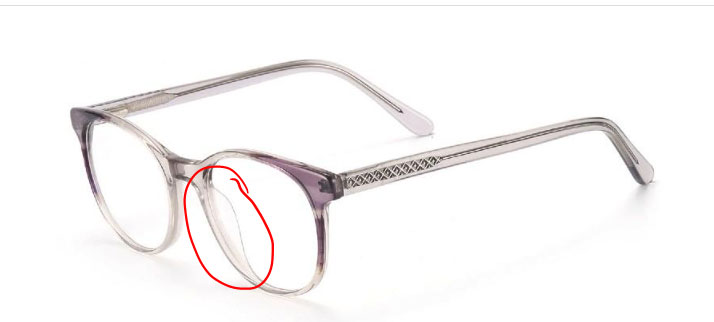
As always, if you need our help, we are but a call away at 866 217-5878, 9 a.m.–7 p.m. PT daily or Text 213 769-8009 or email us
SHOP FOR YOUR NEW GLASSES NOW

